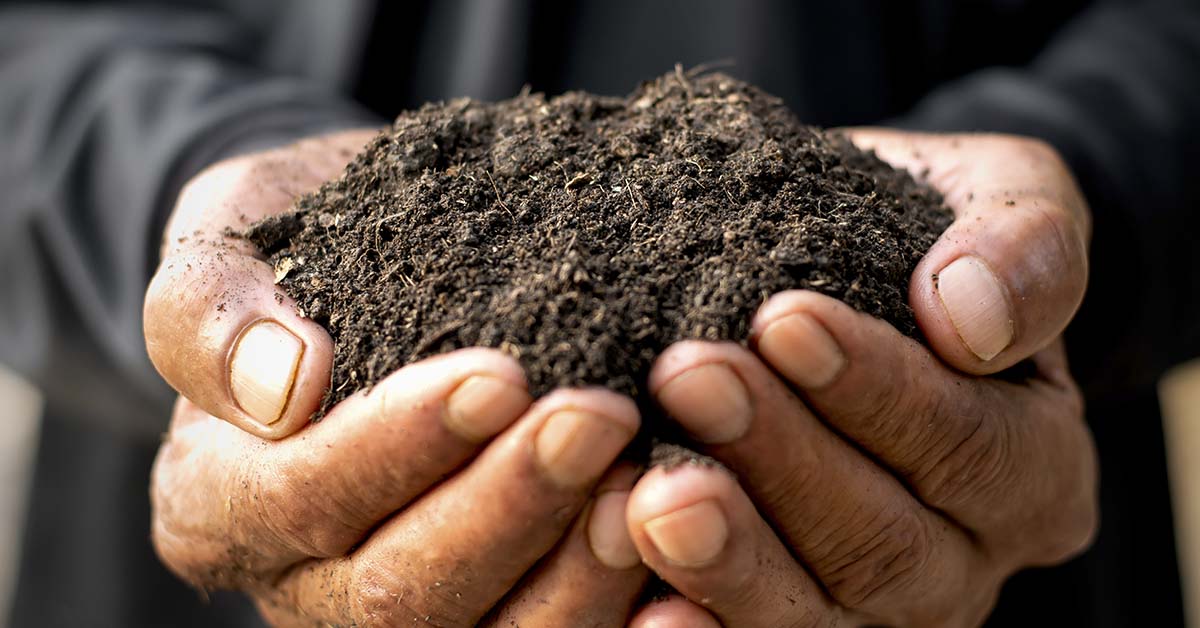A gardening expert experiments with an unorthodox fertilizer for his tomato plants: a whole egg and a banana. First, he buries the food then buries the plant on top of them. He explains that the egg and banana will rot over time, providing nutrients to the growing tomato plants. No further fertilizer is needed. Whether you are a new or seasoned gardener, this unique fertilizer technique could become a game-changer for tomato crops.
Fertilizing Tomato Plants with an Egg and Banana
Gary Pilarchik started a blog and YouTube channel called the Rusted Garden to teach others about vegetable gardening. He created a second channel called My First Vegetable Garden dedicated to teaching new gardeners. He released his first video about the egg and banana fertilizer in 2013. In it, he demonstrated planting one tomato plant with the food items and one without, and promised a follow-up video where he’d compare the results and see if the new technique is truly effective. However, the video never came since a hurricane damaged the crops. But the original video garnered over three million views.
So, in the fall of 2017, he recreated the experiment where he planted the bananas and eggs. He also discusses the differences between store-bought fertilizers and this method. The biggest difference was the affordability of the latter, since you could use rotten bananas and expired eggs.
Then, in 2018, he made a follow-up video where he planted the tomato plants and showed off their growth after two months.
How to Use a Whole Egg and Tomato as Fertilizer
Pilarchik’s method involved:
- 2-3 bananas, sliced down the middle
- 2 broken eggs
- 1 whole egg
- Optional: extra eggshells
Directions:
In the fall, dig a 14-16-inch hole (deep enough to avoid smelling the eggs when they rot). Then place 1-2 bananas, 1 broken egg, 1 whole egg, and eggshells into the hole and bury them. Mark the area and allow the food to rot.
In the spring, dig 12-14 inches into the same spot (you might smell and find the whole egg that has not fully broken down yet). Add another banana and a broken egg to the hole and bury them. Then plant the tomato plant on the surface as you normally would.
Bananas and eggs contain many elements that aid plants’ development. Bananas are rich in potassium, which helps the formation of fruits and flowers. It also enhances how nutrients travel between plant cells, helping to prevent diseases. It may deter pests, including aphids, a species typically attracted to tomato plants. Additionally, bananas contain more nutrients, including iron, sulfur, magnesium, calcium, and phosphorus, all of which enrich the soil, feed the worms, and promote healthy growth. [1]
Now, eggs are a little more tricky. They are filled with phosphorus, nitrogen, magnesium, zinc, copper, and calcium, which benefits plants prone to blossom end rot, like tomatoes, zucchinis, peppers, etc. The calcium will also promote healthy cell walls in crops of leafy greens like cabbage and kale. But eggs as fertilizer smell as they begin to rot if they are not buried deep enough. This may attract raccoons and rodents who’d dig up the plants to access the food. If this is a concern, you could just use shells instead, as explained below. [2]
More Ways to Use Bananas and Eggs in the Garden
Your garden can reap the benefits of these foods in many ways aside from a buried fertilizer. For example, you can create a banana spray to mist the plants and the dirt around them. First, collect four to six banana peels in a glass jar and add 3 liters of water. Cover the jar with a cloth or another breathable lid.
Then, let the mixture seep for at least two days or up to a week. After that, pour the banana liquid into a spray bottle and spritz onto tomato plants. As for the soggy peels, you can cut them into small pieces and bury them around the plants for extra nutrients and fertilization. They should break down very quickly but remember to remove any stickers.
Alternatively, egg shells make a great fertilizer. Simply put the shells aside while cooking eggs, crush them up, and mix them into soil. The smaller the pieces, the more easily they absorb, so you could grind them into a powder in a blender. Or you can boil water with egg shells then use the water for irrigation after it cools down.
This shell water will contain higher levels of potassium and calcium, which especially benefit the fruit and flower part of the plants. In any event, it’s advisable to sterilize the shells before using them in the garden. You can do this in the low oven for a few minutes or in a microwave on high for at least 10 seconds. [3]
Keep Reading: DIY-er Builds A Gazebo Fit For A Fairytale Wedding
Sources
- “How to Plant Tomatoes With Banana Peels.” SFGate. Danielle Smyth. July 27, 2020
- “Using Eggs As Plant Fertilizer: Tips For Fertilizing With Raw Eggs.” Gardening Know How. Bonnie L. Grant. June 4, 2021
- “Are Eggshells, Coffee, and Banana Peels Good for the Garden?” Almanac. March 17, 2023

